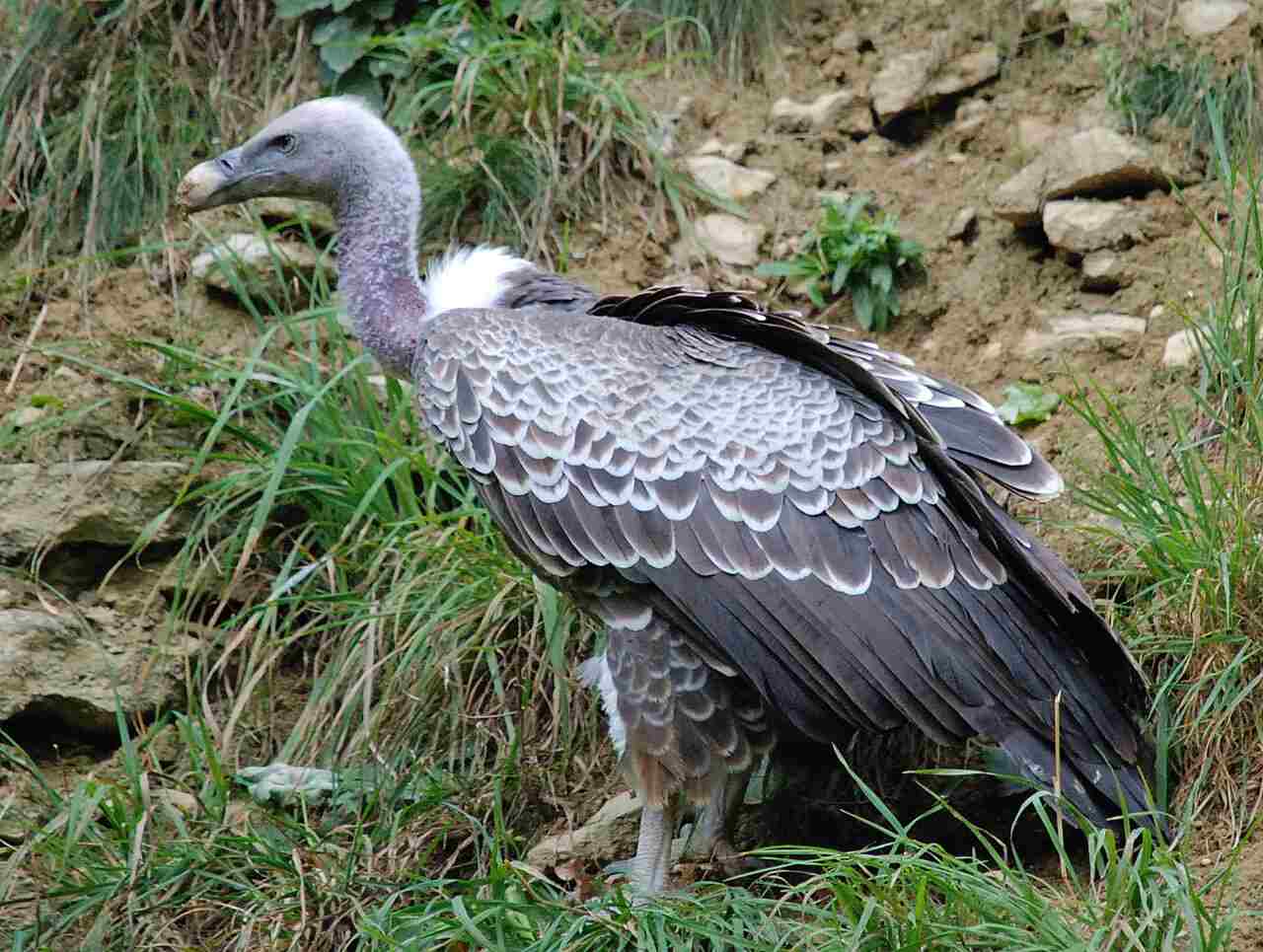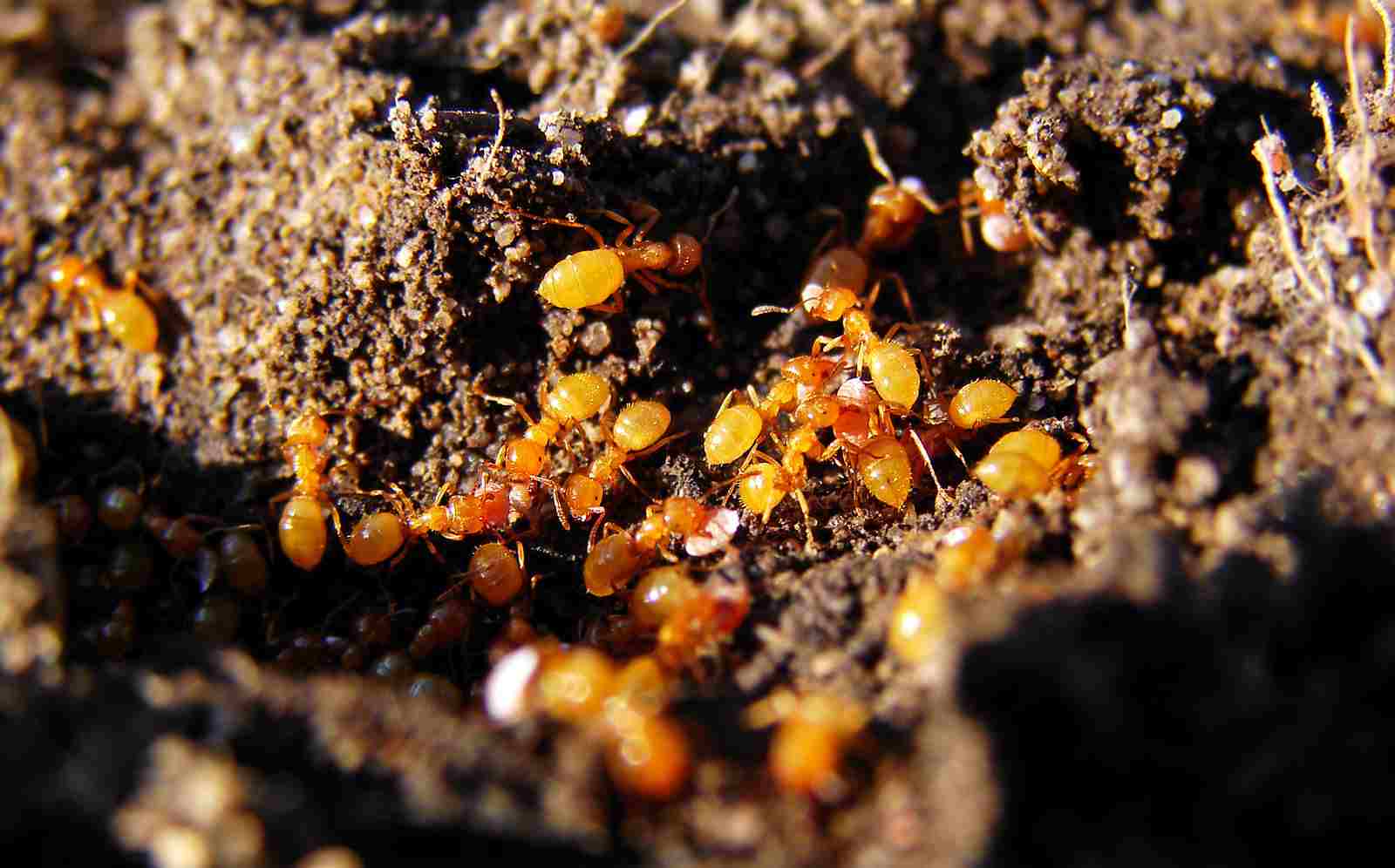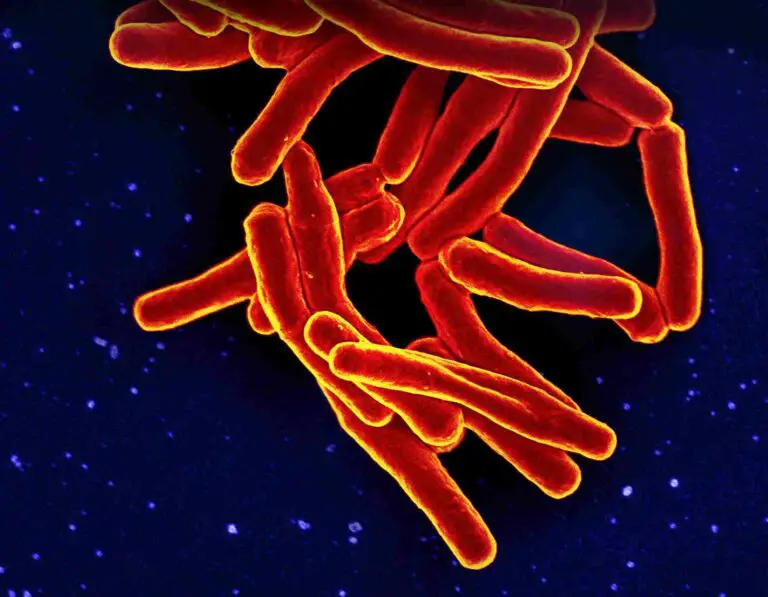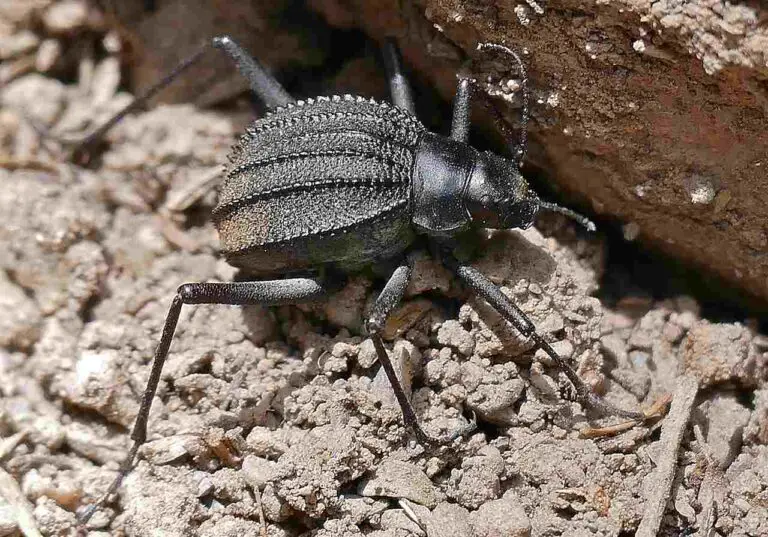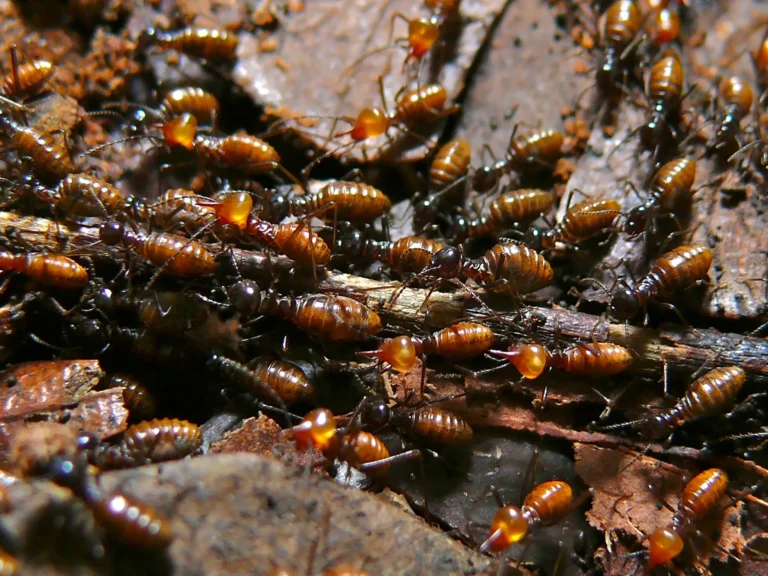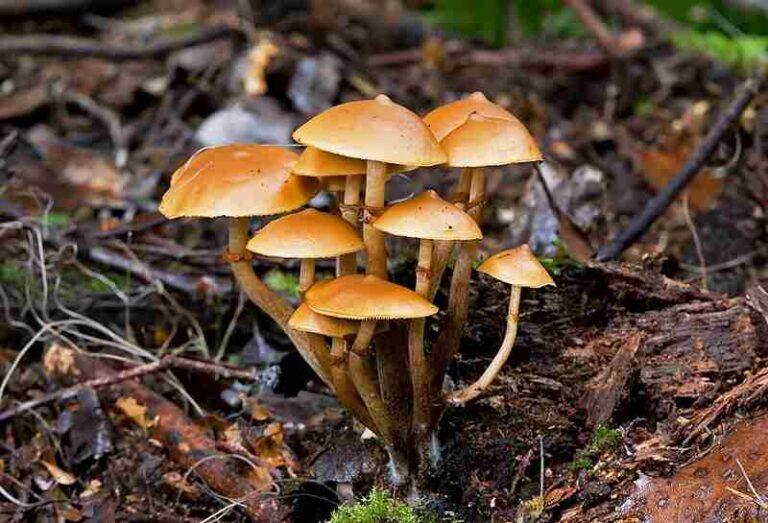What is the Role of Decomposers in the Carbon Cycle?
The role of decomposers in the carbon cycle is multifaceted and includes; breakdown of carbon-rich substrates, recycling of carbon in organic wastes, phase conversion of carbon from solid to gaseous form, release of stored carbon into the atmosphere, supply of carbon dioxide for photosynthesis.
1). Breakdown of Carbon-Rich Organic Substrates
Decomposers play an important role in the carbon cycle by breaking down carbon-rich organic substrates. These substrates include a wide range of materials such as fallen leaves, dead plants, animal carcasses, and other organic matter. Through their activities, decomposers release carbon dioxide (CO2) and other byproducts into the environment.
* The breakdown of carbon-rich organic substrates is an essential process for the cycling of carbon in ecosystems. When organic matter decomposes, decomposers break down the complex carbon compounds present in these substrates. This breakdown releases carbon back into the environment, making it available for other organisms to utilize.
* By breaking down carbon-rich organic substrates, decomposers ensure the mobility of carbon resources within ecosystems. The carbon released during decomposition can be taken up by autotrophs, such as plants, and used for growth and energy production. This process forms a continuous cycle where carbon is constantly being utilized and recycled.
* The breakdown of carbon-rich organic substrates also contributes to the dynamics of carbon in soil. As decomposers break down organic matter, they release carbon into the soil, enriching it with nutrients. This enriched soil provides a fertile environment for plant growth and supports the overall health of the ecosystem.
* Additionally, the breakdown of carbon-rich organic substrates by decomposers can release sequestered carbon. Sequestered carbon refers to carbon that has been stored for long periods, such as in peatlands or permafrost. When decomposers break down these carbon compounds, they release the stored carbon back into the environment. This release of sequestered carbon can impact the overall carbon balance and contribute to greenhouse gas emissions.
* Generally, the breakdown of carbon-rich organic substrates by decomposers is a vital process in the carbon cycle. It ensures the cycling of carbon within ecosystems, supports plant growth, enriches soil, and can release sequestered carbon. By understanding the role of decomposers in breaking down carbon-rich organic substrates, we can better appreciate the importance of these organisms in maintaining the balance of carbon in the environment.
2). Recycling of Carbon in Organic Wastes
Decomposers play a crucial role in the carbon cycle by facilitating the recycling of carbon in organic wastes. Organic matter, such as fallen leaves, dead animals, and plant debris, contains a significant amount of carbon. When these organic wastes decompose, decomposers break down the complex carbon compounds, releasing carbon dioxide (CO2) and other byproducts.
* Recycling carbon in organic wastes is essential for maintaining a balanced carbon budget in ecosystems. Decomposers, including bacteria and fungi, break down the organic matter through the process of decomposition. This breakdown releases carbon back into the environment, making it available for other organisms to utilize.
* The recycling of carbon in organic wastes is a vital process for sustaining life in ecosystems. When organic matter decomposes, the carbon is transformed into CO2, which can be utilized by autotrophs, such as plants, for photosynthesis. Photosynthesis is the process by which plants convert CO2 and sunlight into energy, producing oxygen as a byproduct.
* By breaking down organic wastes, decomposers ensure the mobility of carbon resources within ecosystems. The recycled carbon can be taken up by plants and used for growth and energy production. This process forms a continuous cycle where carbon is constantly being utilized and recycled.
* Additionally, the recycling of carbon in organic wastes by decomposers contributes to the dynamics of carbon in soil. As organic matter decomposes, it enriches the soil with nutrients, including carbon. This enriched soil provides a fertile environment for plant growth and supports the overall health of the ecosystem.
* The activities of decomposers in recycling carbon also have implications for the release of sequestered carbon. In some cases, decomposers can break down carbon compounds that have been stored for long periods, releasing them back into the environment. This release of sequestered carbon can impact the overall carbon balance and contribute to greenhouse gas emissions.
3). Phase Conversion of Carbon from Solid to Gas
Decomposers are instrumental in the phase conversion of carbon from solid to gas in the ecosystem. They facilitate the breakdown of organic matter, such as fallen leaves, dead animals, and plant debris, which contain a significant amount of carbon. Through the process of decomposition, decomposers break down the complex carbon compounds, releasing carbon dioxide (CO2) and other byproducts.
* The phase conversion of carbon from solid to gas is an essential part of the carbon cycle. When organic matter decomposes, the carbon stored in it is transformed into CO2, which is released into the atmosphere. This conversion allows carbon to move from solid forms, such as dead plants and animals, to gaseous forms, making it available for other organisms and processes in the ecosystem.
* Decomposers, including bacteria and fungi, are responsible for breaking down the complex carbon compounds present in organic matter. They secrete enzymes that break down the carbon-rich molecules into simpler forms, releasing CO2 as a byproduct. This phase conversion process is crucial for the recycling of carbon and the overall functioning of the carbon cycle.
* The phase conversion of carbon from solid to gas by decomposers has significant implications for the balance of carbon in the ecosystem. It ensures that carbon resources are mobilized and made available for other organisms to utilize. Without this phase conversion, carbon would remain locked in organic matter, limiting its availability for other processes, such as photosynthesis.
* Furthermore, the phase conversion of carbon by decomposers contributes to the energy transfer processes that sustain the carbon cycle. When carbon is converted from solid to gas, it releases energy that can be utilized by other organisms in the ecosystem. This energy transfer is essential for the functioning and productivity of the ecosystem as a whole.
* In general, the phase conversion of carbon from solid to gas by decomposers is a vital process in the carbon cycle. It allows for the recycling of carbon, the mobilization of carbon resources, and the transfer of energy within the ecosystem. By understanding and appreciating the role of decomposers in this phase conversion, we can better comprehend the dynamics and importance of the carbon cycle in maintaining the balance of our planet’s ecosystems.
4). Release of Stored Carbon into the Atmosphere
Decomposers contribute to the release of stored carbon into the atmosphere.
* They are responsible for breaking down organic matter in the ecosystem, such as dead plants, animals, and other organic waste. Through the process of decomposition, decomposers break down the complex carbon compounds present in these materials, releasing carbon dioxide (CO2) into the atmosphere.
* When organic matter decomposes, the carbon stored in it is converted into CO2 gas. This release of carbon into the atmosphere is an essential part of the carbon cycle. It allows carbon to move from its stored form in organic matter to the gaseous form, making it available for other organisms and processes in the ecosystem.
* Decomposers, including bacteria and fungi, secrete enzymes that break down the carbon-rich molecules in organic matter. As they break down these compounds, CO2 is released as a byproduct. This process ensures that carbon resources are mobilized and made available for other organisms to utilize.
* The release of stored carbon into the atmosphere by decomposers has significant implications for the overall functioning of the carbon cycle. It allows for the recycling of carbon and the replenishment of carbon dioxide in the atmosphere, which is essential for the process of photosynthesis.
5). Supply of Carbon Dioxide for Photosynthesis
Decomposers support the carbon cycle in ecosystems by supplying carbon dioxide (CO2) for photosynthesis.
* They contribute to the release of stored carbon into the atmosphere through the breakdown of organic matter in the ecosystem. As decomposers break down dead plants, animals, and other organic waste, they release carbon dioxide into the air.
* When organic matter decomposes, the carbon stored within it is converted into CO2 gas. This released carbon dioxide is essential for photosynthesis, the process by which plants and other autotrophs convert sunlight, water, and carbon dioxide into glucose and oxygen. Without decomposers releasing carbon dioxide into the atmosphere, photosynthesis would not be possible.
* Decomposers, such as bacteria and fungi, secrete enzymes that break down the carbon-rich molecules in organic matter. As they break down these compounds, carbon dioxide is released as a byproduct. This process ensures a continuous supply of carbon dioxide for photosynthetic organisms, allowing them to produce the energy-rich molecules they need to survive and grow.
* The supply of carbon dioxide for photosynthesis is vital for the functioning of ecosystems. Photosynthetic organisms, including plants, algae, and some bacteria, are the primary producers in the food chain. They convert carbon dioxide into organic compounds, which are then consumed by other organisms. Without decomposers releasing carbon dioxide, the growth and survival of photosynthetic organisms would be limited, leading to a disruption in the entire food web.
* Additionally, the supply of carbon dioxide for photosynthesis helps regulate the Earth’s climate. Carbon dioxide is a greenhouse gas that traps heat in the atmosphere, contributing to the greenhouse effect. By releasing carbon dioxide into the atmosphere, decomposers contribute to the balance of carbon dioxide levels, which is crucial for maintaining a stable climate.
Why are Decomposers Important to the Carbon Cycle?
Decomposers are important to the carbon cycle because; they ensure the mobility of carbon resources, they are vital in the creation and destruction of carbon compounds, their activities enable autotrophs to photosynthesize, they determine the dynamics of carbon in soil, they release sequestered carbon, and also support the energy transfer processes which sustain the carbon cycle.
* Decomposers are vital in the natural creation and destruction of carbon compounds. Through their activities, they break down complex organic molecules and convert them into simpler forms. This process not only releases carbon dioxide but also transforms carbon compounds into forms that can be used by other organisms. By breaking down organic matter, decomposers contribute to the cycling of carbon and the overall functioning of the ecosystem.
* Furthermore, the activities of decomposers enable autotrophs to photosynthesize. Autotrophs, such as plants and algae, rely on carbon dioxide for photosynthesis. By releasing carbon dioxide into the atmosphere, decomposers provide a continuous supply of this essential gas for photosynthetic organisms. Without decomposers, the growth and survival of autotrophs would be limited, disrupting the entire food web.
* Decomposers also play a crucial role in determining the dynamics of carbon in soil. As they break down organic matter, they release carbon into the soil, contributing to its carbon content. This carbon is then available for uptake by plants and other organisms, supporting their growth and productivity. Additionally, decomposers help to regulate the decomposition rate of organic matter in soil, influencing the carbon storage capacity of ecosystems.
* In addition, decomposers release sequestered carbon. In some cases, carbon can be stored for long periods in the form of organic matter, such as peat or fossil fuels. Decomposers have the ability to break down these carbon-rich substances, releasing the stored carbon back into the environment. This process is essential for maintaining the carbon cycle and ensuring the availability of carbon resources for other organisms.
* Lastly, decomposers are integral to the energy transfer processes that sustain the carbon cycle. By breaking down organic matter, they release energy that can be utilized by other organisms in the ecosystem. This energy transfer is essential for the functioning and productivity of the entire ecosystem.
Below is a more elaborate discussion of each area of importance;
1). They Ensure the Mobility of Carbon Resources by Breaking Down Biomass
Decomposers are instrumental in ensuring the mobility of carbon resources by breaking down biomass.
* They are responsible for breaking down complex organic molecules into simpler forms, releasing carbon dioxide in the process. This breakdown of biomass allows for the cycling of carbon and the movement of carbon resources throughout the ecosystem.
* Decomposers, such as bacteria and fungi, break down dead plants, animals, and other organic matter. Through their enzymatic activities, they break down the complex molecules present in these materials into simpler compounds. This breakdown releases carbon dioxide, which can then be utilized by other organisms in the ecosystem.
* The breakdown of biomass by decomposers is an essential step in the carbon cycle. It releases carbon dioxide into the atmosphere, where it can be taken up by autotrophs, such as plants, for photosynthesis. This process provides a continuous supply of carbon dioxide for autotrophs, enabling them to produce organic compounds and support the growth and productivity of the ecosystem.
* Additionally, the breakdown of biomass by decomposers contributes to the availability of carbon resources for other organisms. By breaking down dead organic matter, decomposers release nutrients and carbon compounds that can be used by other organisms for growth and energy production. This ensures the mobility of carbon resources within the ecosystem, allowing them to be utilized by different organisms at different trophic levels.
* Furthermore, the breakdown of biomass by decomposers helps to regulate the carbon content in soil. As decomposers break down organic matter, they release carbon into the soil, contributing to its carbon content. This carbon is then available for uptake by plants and other organisms, supporting their growth and productivity. The activities of decomposers also influence the decomposition rate of organic matter in soil, which in turn affects the carbon storage capacity of ecosystems.
2). Decomposers are Vital in the Natural ‘Creation’ and ‘Destruction’ of Carbon Compounds
Decomposers play a vital role in the natural “creation” and “destruction” of carbon compounds.
* They are responsible for breaking down organic matter, such as dead plants and animals, into simpler compounds through their enzymatic activities. This breakdown releases carbon dioxide, which is an essential component of the carbon cycle.
* Decomposers, including bacteria and fungi, break down complex organic molecules into simpler forms. This process releases carbon dioxide into the atmosphere, where it can be utilized by autotrophs for photosynthesis. By breaking down organic matter, decomposers ensure a continuous supply of carbon dioxide for autotrophs, enabling them to produce organic compounds and support the growth and productivity of the ecosystem.
* The breakdown of organic matter by decomposers also contributes to the availability of carbon resources for other organisms. As decomposers break down dead organic matter, they release nutrients and carbon compounds that can be used by other organisms for growth and energy production. This ensures the mobility of carbon resources within the ecosystem, allowing them to be utilized by different organisms at different trophic levels.
* Additionally, the activities of decomposers help regulate the carbon content in soil. As they break down organic matter, decomposers release carbon into the soil, contributing to its carbon content. This carbon is then available for uptake by plants and other organisms, supporting their growth and productivity. The activities of decomposers also influence the decomposition rate of organic matter in soil, which in turn affects the carbon storage capacity of ecosystems.
* Furthermore, decomposers are involved in the natural “destruction” of carbon compounds. Through their enzymatic activities, they break down complex organic molecules, releasing carbon dioxide back into the atmosphere. This process is essential for maintaining the balance of carbon in the ecosystem and preventing the accumulation of carbon compounds that could disrupt the carbon cycle.
3). Activities of Decomposers Enable Autotrophs to Photosynthesize
Decomposers play a crucial role in enabling autotrophs to photosynthesize.
* They do this through their activities that break down organic matter and release essential nutrients and carbon compounds into the environment. These nutrients and compounds are then taken up by autotrophs, such as plants and algae, to carry out the process of photosynthesis.
* One of the key ways decomposers enable photosynthesis is by releasing carbon dioxide into the atmosphere. When decomposers break down organic matter, they release carbon dioxide as a byproduct. This carbon dioxide is then available for autotrophs to use during photosynthesis. Autotrophs take in carbon dioxide from the atmosphere through tiny openings called stomata in their leaves or other photosynthetic structures. They combine carbon dioxide with water and sunlight to produce glucose and oxygen, which are essential for their growth and survival.
* In addition to carbon dioxide, decomposers also release other nutrients and minerals into the environment. These nutrients, such as nitrogen, phosphorus, and potassium, are essential for the growth and development of autotrophs. Autotrophs absorb these nutrients through their roots or other specialized structures, allowing them to build proteins, enzymes, and other essential molecules necessary for photosynthesis.
* Furthermore, decomposers break down complex organic molecules into simpler forms, making them more accessible to autotrophs. This breakdown process, known as mineralization, releases nutrients and energy that autotrophs can utilize. By breaking down organic matter, decomposers convert complex compounds into forms that autotrophs can easily absorb and use for photosynthesis.
* The activities of decomposers also contribute to the overall health and productivity of ecosystems. By breaking down dead plant and animal material, decomposers prevent the accumulation of organic waste, which could otherwise hinder the growth of autotrophs. Decomposers ensure that nutrients and carbon compounds are recycled and made available for autotrophs to use, promoting the growth of plants and algae, which form the base of the food chain.
4). Decomposers Determine the Dynamics of Carbon in Soil
Decomposers play a vital role in determining the dynamics of carbon in soil.
* They are responsible for breaking down organic matter, such as dead plants and animals, into simpler forms. This process, known as decomposition, releases carbon compounds into the soil. These carbon compounds can then be utilized by other organisms in the ecosystem.
* Decomposers, such as bacteria and fungi, break down complex organic molecules into smaller molecules through enzymatic reactions. This breakdown process releases carbon dioxide as a byproduct. The carbon dioxide can either be released into the atmosphere or dissolved in water, contributing to the carbon cycle.
* The activities of decomposers also influence the storage and release of carbon in soil. When organic matter is decomposed, some of the carbon is converted into stable forms, such as humus. Humus acts as a reservoir for carbon in the soil, storing it for long periods of time. However, decomposers can also release stored carbon back into the atmosphere through respiration or when organic matter is disturbed.
* Also, decomposers interact with other soil organisms, such as plants and microorganisms, influencing the availability of carbon in the soil. They release nutrients and minerals during decomposition, which can be taken up by plants and used for growth. This, in turn, affects the amount of carbon that is stored in plant biomass and the overall carbon balance in the ecosystem.
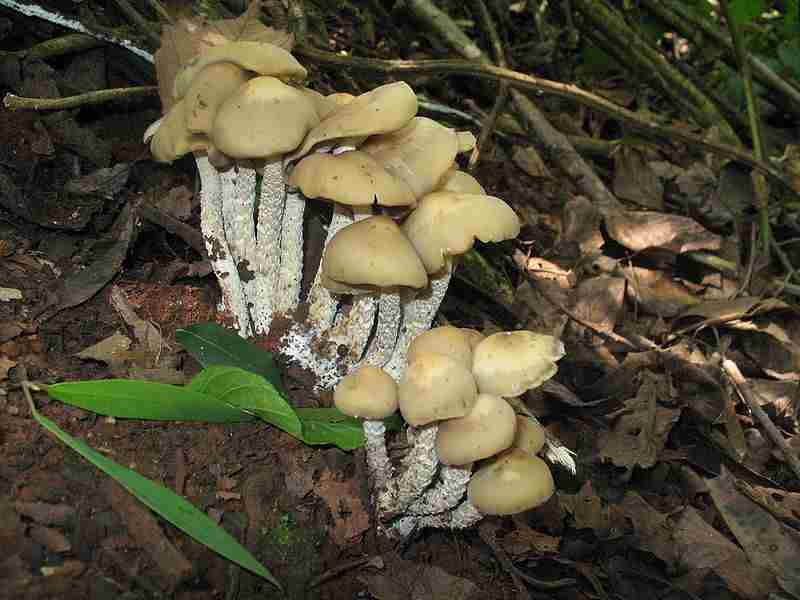
5). Sequestered Carbon is Released by Decomposers
Decomposers play a crucial role in the carbon cycle by releasing sequestered carbon back into the environment.
*When organic matter, such as dead plants and animals, is broken down by decomposers, carbon that was previously stored in these materials is released. This process is known as decomposition, and it is an essential step in the natural recycling of carbon.
*Decomposers, including bacteria and fungi, break down complex organic molecules into simpler forms through enzymatic reactions. As they break down these molecules, carbon dioxide is released as a byproduct. This carbon dioxide can then be released into the atmosphere or dissolved in water, contributing to the carbon cycle.
*In addition to releasing carbon dioxide, decomposers also influence the storage and release of carbon in soil. When organic matter is decomposed, some of the carbon is converted into stable forms, such as humus. Humus acts as a reservoir for carbon in the soil, storing it for long periods of time. However, decomposers can also release stored carbon back into the atmosphere through respiration or when organic matter is disturbed.
*Furthermore, decomposers interact with other organisms in the ecosystem, such as plants and microorganisms, which affects the availability of carbon. During decomposition, decomposers release nutrients and minerals that can be taken up by plants and used for growth. This process influences the amount of carbon stored in plant biomass and the overall carbon balance in the ecosystem.
*The release of sequestered carbon by decomposers is a natural part of the carbon cycle. It allows for the recycling and redistribution of carbon resources, ensuring that they are available for other organisms to utilize. Without decomposers, carbon would remain locked in organic matter, limiting its availability for other organisms and disrupting the balance of the carbon cycle.
6). Decomposers are Integral to the Energy Transfer Processes that Sustain the Carbon Cycle
Decomposers play a vital role in the energy transfer processes that sustain the carbon cycle.
*By breaking down organic matter, decomposers release stored energy in the form of carbon compounds, which can then be utilized by other organisms in the ecosystem.
*When decomposers break down complex organic molecules, they release energy-rich carbon compounds. These compounds serve as a source of energy for other organisms, such as detritivores and scavengers, which feed on the decomposed organic matter. Through this process, decomposers facilitate the transfer of energy from dead organisms to living organisms, ensuring the continuous flow of energy within the ecosystem.
*In addition to providing energy, decomposers also contribute to the nutrient cycling within the carbon cycle. As they break down organic matter, decomposers release essential nutrients, such as nitrogen and phosphorus, which are necessary for the growth and development of plants. These nutrients are then taken up by plants through their roots, allowing them to photosynthesize and convert carbon dioxide into organic compounds.
*Furthermore, decomposers are involved in the breakdown of complex carbon compounds, such as lignin and cellulose, which are found in plant cell walls. These compounds are resistant to degradation by most organisms, but decomposers possess the necessary enzymes to break them down. Through the enzymatic breakdown of lignin and cellulose, decomposers release carbon that was previously locked in plant biomass, making it available for other organisms to utilize.
*The energy transfer processes facilitated by decomposers are essential for the functioning of the carbon cycle. Without decomposers, the energy stored in organic matter would remain locked and unavailable for other organisms, disrupting the flow of energy within the ecosystem. Additionally, the breakdown of complex carbon compounds by decomposers ensures the recycling and redistribution of carbon resources, maintaining the balance of the carbon cycle.
Do Decomposers Release Carbon Dioxide?
Yes, decomposers release carbon dioxide through respiration and biodegradation. As shown in earlier sections, they are heterotrophic and release carbon dioxide through cellular respiration. they also release carbon dioxide from organic matter through both aerobic anaerobic decomposition.
Cellular respiration is the metabolic process by which organisms convert organic compounds into energy. Decomposers, like other organisms, undergo cellular respiration to obtain the energy they need for their life processes. As a byproduct of this process, carbon dioxide is released into the environment.
In addition to respiration, decomposers also release carbon dioxide through the biodegradation of organic matter. Biodegradation refers to the breakdown of organic substances by microorganisms. Decomposers break down complex organic molecules through both aerobic and anaerobic decomposition processes, releasing carbon dioxide as a result.
Aerobic decomposition occurs in the presence of oxygen, while anaerobic decomposition occurs in the absence of oxygen. Both processes contribute to the release of carbon dioxide into the atmosphere.
FAQs
1. What Role Do Decomposers Play in Cycling Matter?
Decomposers play a crucial role in the cycling of matter, particularly carbon, in ecosystems. They are responsible for breaking down organic matter, such as dead plants and animals, into simpler compounds. Through the process of decomposition, decomposers release nutrients back into the environment, making them available for other organisms to use. This cycling of matter ensures the continuous flow of energy and nutrients within an ecosystem.
2. What are Some Examples of Decomposers in the Carbon Cycle?
There are various types of decomposers involved in the carbon cycle. Bacteria and fungi are the primary decomposers responsible for breaking down organic matter. Bacteria, such as Actinobacteria and Proteobacteria, are abundant in soil and play a significant role in decomposing organic material. Fungi, including molds and mushrooms, are also important decomposers, particularly in forest ecosystems. These decomposers break down complex organic compounds into simpler forms, releasing carbon dioxide in the process.
3. What Impact Do Humans Have on the Carbon Cycle?
Humans have a significant impact on the carbon cycle through various activities. The burning of fossil fuels, such as coal, oil, and natural gas, releases large amounts of carbon dioxide into the atmosphere.
Deforestation, which involves the clearing of forests for agriculture, urbanization, and wood harvesting, reduces the number of trees available to absorb carbon dioxide through photosynthesis. Additionally, the production and consumption of goods contribute to carbon emissions, further disrupting the natural balance of the carbon cycle.
4. What Are Two Ways Humans Disrupt the Carbon Cycle?
Two primary ways in which humans disrupt the carbon cycle are through deforestation and the burning of fossil fuels. Deforestation reduces the number of trees available to absorb carbon dioxide, leading to increased levels of this greenhouse gas in the atmosphere. The burning of fossil fuels releases carbon dioxide that has been stored underground for millions of years, adding to the overall concentration of carbon dioxide in the atmosphere. These human activities contribute to climate change and alter the natural balance of the carbon cycle.
5. What Is the Role of Fossilization in the Carbon Cycle?
Fossilization plays a crucial role in the carbon cycle by sequestering carbon over long periods of time. When plants and animals die, their remains can become buried under layers of sediment. Over time, the pressure and heat from the Earth’s crust transform these organic materials into fossil fuels, such as coal, oil, and natural gas. These fossil fuels contain carbon that was once part of the atmosphere, effectively removing it from the carbon cycle. However, when humans extract and burn these fossil fuels, the stored carbon is released back into the atmosphere, contributing to climate change.
6. What Role Do Decomposers Play in the Phosphorus Cycle?
While decomposers primarily play a role in the carbon cycle, they also contribute to the phosphorus cycle. Phosphorus is an essential nutrient for all living organisms, and decomposers help release phosphorus from organic matter back into the environment.
As decomposers break down dead plants and animals, they release phosphorus compounds that can be taken up by plants. This cycling of phosphorus ensures its availability for plant growth and the overall functioning of ecosystems.
7. Do Decomposers Release Carbon Dioxide into the Atmosphere?
Yes, decomposers release carbon dioxide into the atmosphere through the process of decomposition. As decomposers break down organic matter, they metabolize the carbon-rich compounds and release carbon dioxide as a byproduct. This carbon dioxide can then be absorbed by plants during photosynthesis or released into the atmosphere, contributing to the overall carbon cycle.
8. How Does Carbon Enter the Biotic Part of the Ecosystem?
Carbon enters the biotic part of the ecosystem through the process of photosynthesis. Plants, algae, and some bacteria are capable of photosynthesis, which involves using sunlight, carbon dioxide, and water to produce glucose and oxygen.
During photosynthesis, plants absorb carbon dioxide from the atmosphere and convert it into organic compounds, such as sugars and starches. These organic compounds serve as a source of energy for the plants themselves and for other organisms that consume them.
9. Where Is Most of the Earth’s Carbon Located and in What Form?
Most of the Earth’s carbon is located in the form of carbon dioxide in the atmosphere, dissolved carbon dioxide in the oceans, and organic matter in the biosphere. The atmosphere contains approximately 0.04% carbon dioxide, which is essential for regulating the Earth’s temperature through the greenhouse effect.
The oceans also store a significant amount of carbon dioxide, which can be absorbed by marine organisms and contribute to the formation of shells and coral reefs. Organic matter, such as plants, animals, and soil, contains carbon in various forms and serves as a reservoir for carbon in the biosphere.
10. What Type of Decomposers Help Recycle Carbon?
Various types of decomposers help recycle carbon, including bacteria and fungi. Bacteria, such as cellulose-degrading bacteria, break down complex organic compounds, such as cellulose and lignin, into simpler forms.
Fungi, particularly saprophytic fungi, play a crucial role in decomposing dead plant material, such as fallen leaves and wood. These decomposers release carbon dioxide during the decomposition process, contributing to the recycling of carbon in ecosystems.
11. Does Decomposition Sequester Carbon?
Decomposition itself does not sequester carbon. Instead, decomposition releases carbon dioxide into the atmosphere as organic matter is broken down by decomposers. However, the carbon cycle involves the continuous movement of carbon between different reservoirs, including the atmosphere, biosphere, and geosphere.
While decomposition releases carbon dioxide, other processes, such as photosynthesis and fossilization, can sequester carbon and remove it from the atmosphere, effectively balancing the carbon cycle.
12. What Is the Role of Fungi in Carbon Sequestration?
Fungi play a significant role in carbon sequestration through their ability to break down complex organic compounds. As decomposers, fungi break down dead plant material, releasing carbon dioxide in the process.
However, some fungi form mutualistic relationships with plants, such as mycorrhizal associations, where they exchange nutrients with the plant. In these associations, fungi can help plants absorb and store carbon in the form of organic compounds, contributing to carbon sequestration in the soil.
13. What is the Importance of Decomposers?
Decomposers are essential for the functioning of ecosystems and the carbon cycle. They break down organic matter, releasing nutrients back into the environment and making them available for other organisms.
Without decomposers, the remains of dead plants and animals would accumulate, and nutrients would be locked in organic matter, limiting their availability for other organisms. Decomposers also play a role in the release of carbon dioxide, which is essential for photosynthesis and the overall balance of the carbon cycle. Their activities ensure the recycling of carbon and the continuous flow of energy and nutrients within ecosystems.



